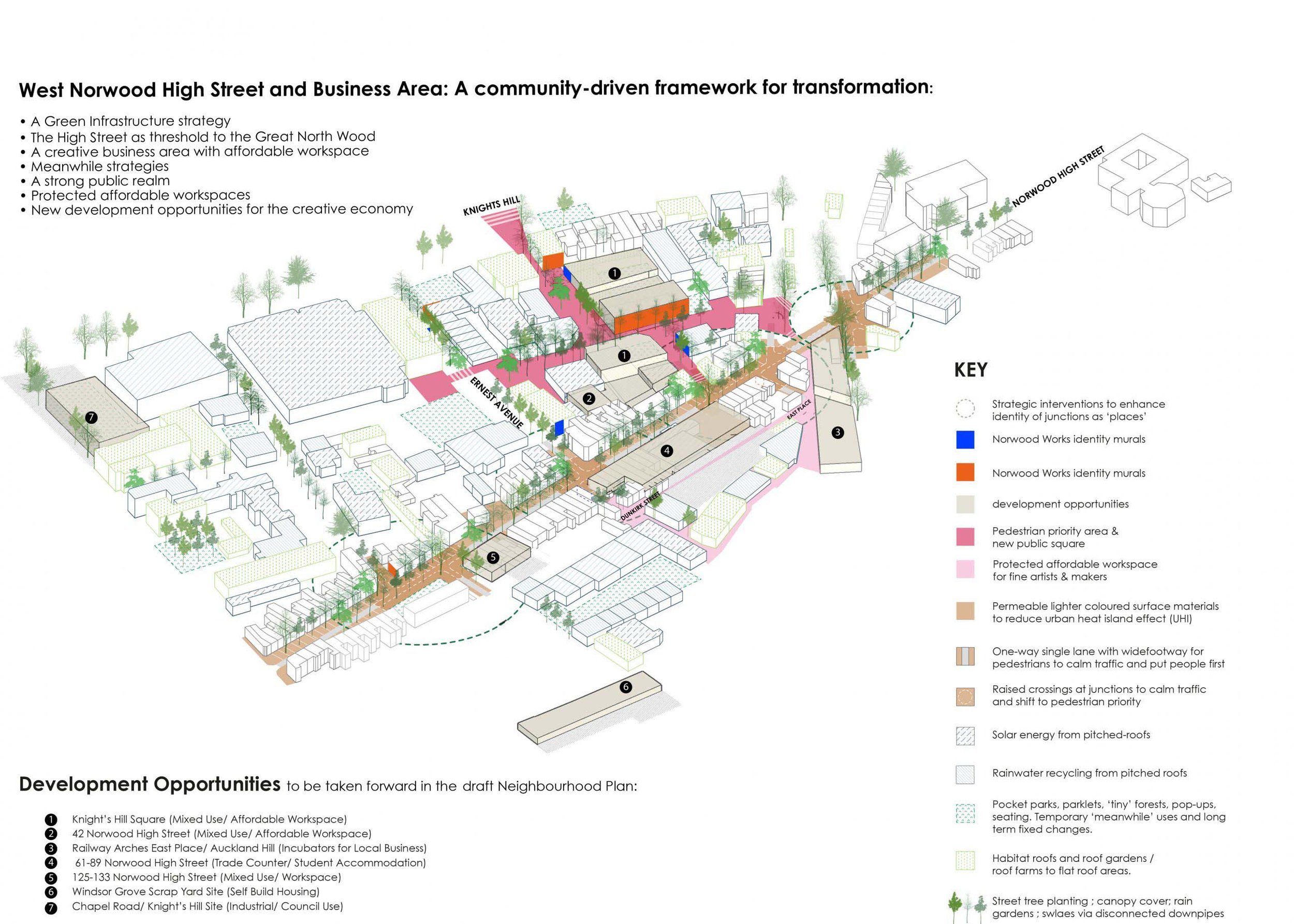how do you use the high street?
The Power of Norwood High Street: Activities
Norwood High Street, London
Type | Digital month-long consultation
Client | London Festival of Architecture
Status | Completed June 2020
Collaboration | Station to Station, the West Norwood & Tulse Hill Business Improvement District
Publication | High Street Task Force
Technically, how does planning in the Local Authority respond to this? For example, do we need new ‘Use Classes’ to facilitate adaptable strategies? How can we protect unintended activity and the use if interstitial places? Artists and makers have adapted railway arches and abandoned warehouses making a strong artisan community. How can we ensure any high street ‘gentrification’ doesn’t push them out? How can we provide even more flexible workspace for locals?
Roundtable with Lambeth Council
What did we do?
Our aim was to discuss this locality (or ‘key site’ according to neighbourhood plan) with Planning, Policy, Regeneration and Business & Enterprise teams within Lambeth Council and find a common ground that we can work collectively on. Mainly so that the top-down ambition is synchronised with the bottom-up aspiration that is being prepared as part of the Neighbourhood Plan.
Key Recommendations
1. Outside of the shopping area Lambeth Council policy is being flexible with B class uses since it recognises the growing need for workspace.
2. Local stakeholders, residents and business should avoid piecemeal assessment on sites and do larger assembly of city blocks. Lambeth promotes working collectively with neighbors to take a longer term vision of sites
3. Lambeth Council is trying to introduce interim and alternative uses across sites and spaces. This is to promote meanwhile strategies, interim uses and agile approaches.
4. There is strong argument to champion West Norwood as an area of ‘hyper-locality’ especially as boroughs seek to widen the focus from central areas and promote hyper locality.
5. Lambeth Council is preparing a Supplementary Planning Documents (SPD) for this area, and they want to hear the views of local residents and stakeholders because it will add richness and an evidence-base to the SPD.
Pecha Kucha
What did we do?
After the Pecha Kucha we realised the different visions were very synchronised and could be integrated into a single community-driven framework for transformation (see image to the right). This framework addresses not only Norwood High street but also the Key Industrial Business Area (KIBA) to the West and the existing artist warehouses to the East of the high street. This integrated view of the area is a more realistic boundary-free approach to understanding West Norwood and promoting a comprehensive regeneration. The community-driven framework has been prepared by: A Small Studio, R2 Studio Architects, Untitled Practice, Norwood Planning Assembly, Mark Fairhurst Architects.
Pecha Kucha is a storytelling format that allows to present something in a very dynamic and efficient way. The presenter shows 20 slides, and comments each slide for 20 seconds. In total the presentation is 6 minutes and 40 seconds.
A Small Studio
R2 Studio Architects
Untitled Practice
Norwood Planning Assembly
Mark Fairhurst Architects
East Anglia Records
Poll
What did we do?
We launched a poll with the same questions at every event, including an email circulation to local businesses using Google Forms. In total we had 68 participants.
Explore more from The Power of Norwood High Street
Click LANDSCAPE to see the results from our Workshop for Secondary School Children, the Workshop for Residents with Learning Difficulties and the Landscape Webinar.
Click JOURNEY to see the results from a collaboration with urban ecologist Joanna Ferguson with whom we have developed a Bat’s Highway.
Click ACTIVITIES to see the results from our Poll, the Pecha Kucha and the Roundtable with Lambeth Council.








